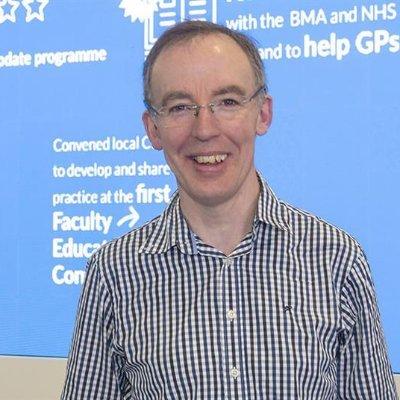 When I swapped my purple Public Health consultant badge two years ago for an orange foundation year badge on the medical wards, I knew that there would be challenging weeks. After a few months on the wards I was ready to apply for GP training. I now have a green badge and am midpoint through GP training. Twenty five years into my medical career, I frequently feel I am right back at the start.
When I swapped my purple Public Health consultant badge two years ago for an orange foundation year badge on the medical wards, I knew that there would be challenging weeks. After a few months on the wards I was ready to apply for GP training. I now have a green badge and am midpoint through GP training. Twenty five years into my medical career, I frequently feel I am right back at the start.
On Monday morning a patient died after a long admission. There was a lot to be arranged between family, procurator fiscal (the Scottish equivalent to the Crown Prosecution Service in the rest of the UK) and new death certification rules for the covid-19 pandemic. There were several stages to complete before the family could arrange the funeral. That afternoon a patient deteriorated and was clearly dying. Discussions with the family built up a picture of the patient’s remarkable life and helped me to establish rapport and trust for the difficult decisions ahead. However, diagnostic uncertainty and input from different specialties resulted in discussions about tests and treatments that sat uncomfortably with a continuing decline. On Thursday afternoon I had scheduled time with another patient and family. Illness had delayed sharing a diagnosis of cancer, but now was the right time for such a discussion and planning discharge supported by the palliative care team.
This was a busy and emotionally taxing week. I felt that I was practising holistically and empathetically, drawing on experience from throughout my career. I also pulled my weight with the rest of the ward work, clerking in my share of new patients and ticking through the jobs in the ward diary, from continence and falls checklists, to complex family discussions. There are checklists and templates for most jobs on a medicine of the elderly ward. Talking to one of the new doctors on our ward I confidently announced that if we kept on top of these checklists, the ward rounds, weekly multidisciplinary team discussions, and bone health, then meetings would flow smoothly.
However, during the consultant ward round on Friday morning I realised that I had only been scratching the surface of the care required for several of our patients. A discussion with a patient’s relative had unearthed a number of family concerns, but had not touched upon the central issues in considering discharge destination (in this case night-time incontinence, which can be a deal breaker as packages of care do not cover nights—basic stuff). For another patient, clerking and a set of discussions between allied health professionals, doctors, and the family had not identified why the patient had required a second admission in a short space of time, or how we could support a successful discharge this time around. I felt very junior and inexperienced. I realised how far I still had to go before becoming an independently practising GP.
When I was training as a Public Health doctor I learnt how to understand the big picture, something I later taught regularly as a consultant. Dahlgren and Whitehead’s model, for example, represents the individual, family, community, social determinants of health and economy schematically in a semi-circle. Really it should be a “snow globe”, capturing three dimensions plus a marker of time as the glitter settles on the scene. Clinical practice—particularly medicine of the elderly perhaps—also requires us to build up a full picture of an individual’s circumstances, for example in asking about social history, home environment (e.g. how many steps up to and within the patient’s home) and questions about “what matters to you”. This is relevant in the Emergency Department (e.g. in deciding whether to admit or discharge), ward and GP surgery. Supporting information is built into many of our checklists—a cognitive assessment for example typically includes a question about educational level so you can assess the score against baseline function. However a series of checklists, while useful for safety, only really takes us from one to two dimensions in understanding the patient.
As a trainee I sometimes miss the third dimension when I am assessing a patient, particularly if there is not a significant label attached—e.g. “end of life” or “cancer.” Single issues give me tunnel vision, leaving me blind to the full vista obvious to a more experienced colleague. Logistical challenges—e.g. syringing ears before a capacity assessment—become the focus, a tick in the ward diary. Next week I may veer towards a task-based approach again, as the minutes accelerate towards the evening handover. Following these reflections hopefully I will pause and with a little extra thought the patient’s world will come into full technicolour and 3D. Hopefully my reverse journey through the badge colours of medical seniority will help.
Graham Mackenzie, GPST2, NHS Education for Scotland, UK. @gmacscotland
Competing interests: none.
